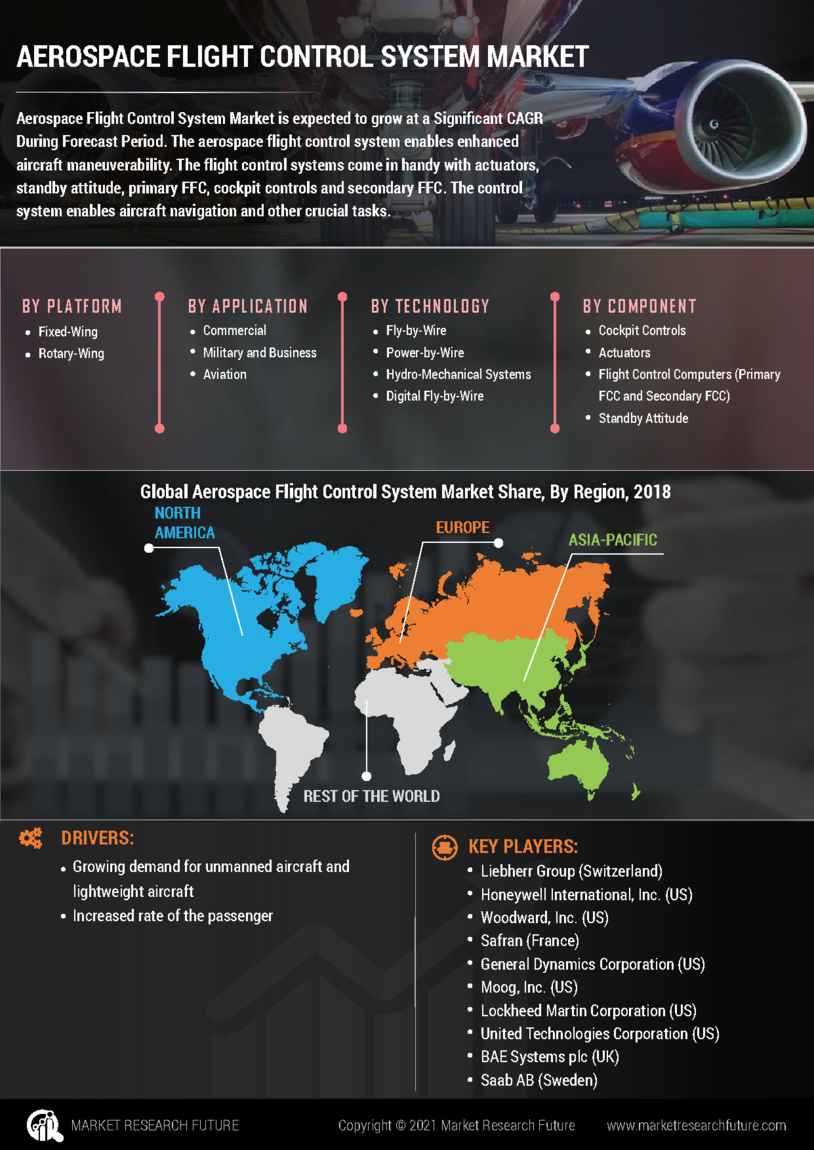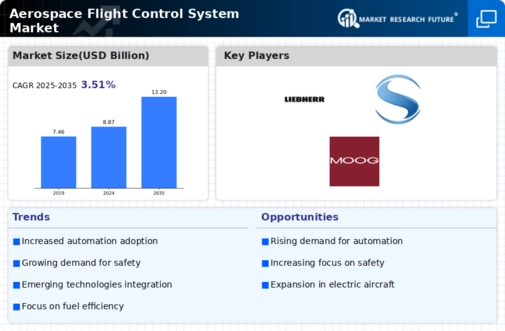Market Growth Projections
The Global Aerospace Flight Control System Industry is projected to experience substantial growth over the coming years. With a market value expected to reach 8.87 USD Billion in 2024 and further increase to 13.2 USD Billion by 2035, the industry is poised for a promising trajectory. The compound annual growth rate (CAGR) of 3.66% from 2025 to 2035 indicates a steady expansion, driven by factors such as technological advancements, increasing demand for fuel efficiency, and military modernization initiatives. These projections highlight the dynamic nature of the market and the various drivers contributing to its growth.
Technological Advancements
The Global aerospace flight control system Industry is experiencing rapid technological advancements, particularly in the areas of automation and digitalization. Innovations such as fly-by-wire systems and advanced avionics are enhancing aircraft performance and safety. For instance, the integration of artificial intelligence and machine learning in flight control systems is streamlining operations and improving decision-making processes. This trend is likely to drive market growth, as the industry anticipates a market value of 8.87 USD Billion in 2024, with projections indicating a rise to 13.2 USD Billion by 2035. Such advancements suggest a robust CAGR of 3.66% from 2025 to 2035.
Growth in Commercial Aviation
The Global Aerospace Flight Control System Industry is benefiting from the robust growth in commercial aviation. As global air travel demand continues to rise, airlines are expanding their fleets and upgrading existing aircraft with advanced flight control systems. This trend is particularly evident in emerging markets, where increasing disposable incomes and urbanization are driving air travel. The International Air Transport Association (IATA) forecasts a significant increase in passenger numbers, which in turn fuels the demand for modern flight control systems. This growth in commercial aviation is expected to contribute positively to the market's expansion, aligning with the projected values of 8.87 USD Billion in 2024 and 13.2 USD Billion by 2035.
Military Modernization Initiatives
The Global Aerospace Flight Control System Industry is also influenced by military modernization initiatives across various nations. Governments are investing heavily in upgrading their military aircraft with advanced flight control systems to enhance operational capabilities and maintain strategic advantages. This includes the integration of cutting-edge technologies such as autonomous flight systems and enhanced navigation aids. Countries are prioritizing defense spending, which is likely to drive demand for sophisticated flight control systems. As military modernization continues to gain momentum, it is anticipated that this segment will significantly contribute to the overall growth of the market.
Increasing Demand for Fuel Efficiency
The Global Aerospace Flight Control System Industry is witnessing a growing emphasis on fuel efficiency, driven by rising fuel costs and environmental concerns. Airlines and manufacturers are increasingly adopting flight control systems that optimize fuel consumption, thereby reducing operational costs. For example, advanced flight management systems enable precise navigation and altitude management, which can lead to significant fuel savings. This focus on efficiency is expected to contribute to the market's growth trajectory, as the industry aims to meet the projected market value of 8.87 USD Billion in 2024 and 13.2 USD Billion by 2035, reflecting a CAGR of 3.66% from 2025 to 2035.
Regulatory Compliance and Safety Standards
The Global Aerospace Flight Control System Industry is heavily influenced by stringent regulatory compliance and safety standards. Governments and aviation authorities worldwide are implementing rigorous regulations to enhance flight safety and operational reliability. This has led to increased investments in advanced flight control systems that meet or exceed these standards. For instance, the Federal Aviation Administration (FAA) and the European Union Aviation Safety Agency (EASA) have established guidelines that necessitate the adoption of state-of-the-art technologies in flight control systems. Consequently, this regulatory landscape is likely to propel market growth, as stakeholders seek to align with evolving safety requirements.

















